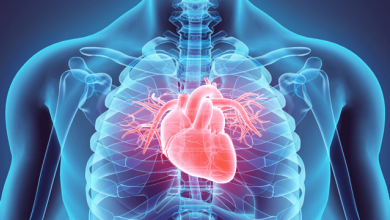Search results
Author(s):
Valentina O Puntmann
,
Silvia Valbuena-López
Added:
1 year ago
Author(s):
Elías Martínez Rey-Rañal
,
Alberto Cordero
Added:
1 year ago
Author(s):
Valentina O Puntmann
,
Anastasia Shchendrygina
,
Carlos Rodriguez Bolanos
,
et al
Added:
6 months ago
Myocardial Perfusion Imaging
Author(s):
Carmela Nappi
,
Valeria Gaudieri
,
Alberto Cuocolo
Added:
3 years ago
Article
Comment on Leadless Pacemakers
Author(s):
Zaki Akhtar
,
Manav Sohal
,
Mark M Gallagher
Added:
8 months ago
Article
Author(s):
Elved B Roberts
,
Nicholas D Palmer
Added:
3 years ago
Late stent thrombosis has been a concern for interventional cardiologists since the early days of drug-eluting stent (DES) technology. Although the problem did not appear common, a series of angiographically documented late stent thromboses from the Thoraxcenter Rotterdam was published in 2004, sounding a cautionary, albeit non-alarmist, note.1 In 2005, a prospective observational cohort study of…
View more
Author(s):
Andrea Aparicio
,
Javier Cuevas
,
César Morís
,
et al
Added:
2 years ago
Author(s):
Sebastian Kelle
,
Eike Nagel
Added:
3 years ago
Magnetic resonance imaging (MRI) is a powerful imaging modality for diagnostic cardiology and research. This imaging method provides combined diagnostic information of different tissue characteristics, such as the visualisation of the vascular tree and cardiac anatomy and function, as well as measurements of blood flow in the vessels, ventricular wall motion, myocardial perfusion and viability…
View more
Mitralign Percutaneous Annuloplasty System for the Treatment of Functional Mitral Regurgitation
Author(s):
Lazar Mandinov
,
Federico M Asch
,
Eberhard Grube
Added:
3 years ago
Article
Author(s):
David E Allie
,
Chris J Herbert
,
Craig M Walker
Added:
3 years ago
Despite the recent introduction of vascular closure device (VCD) technology, vascular access site complications remain the leading source of morbidity and costs after the approximately eight to eight-and-a-half million percutaneous catheter-based procedures performed annually worldwide.1 VCD trials consistently demonstrate increased patient satisfaction, early ambulation, and decreased hospital…
View more














 « First
« First